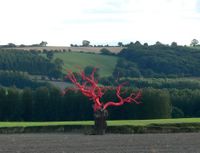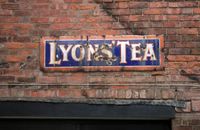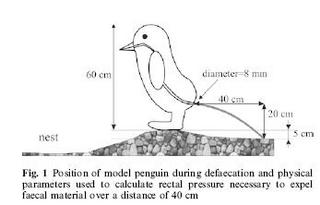This is an unusual article (a pdf): an examination of negative relationships in social networks, particularly in organizations. The bulk of social networks studies and community studies are about the positive -- benefits acrued, capital, positive reciprocity, sharing of resources, emotional feeling and trust -- but humans do have negative feelings and interactions and groups exhibit negative behaviors both by individuals and collectively.
Labianca and Brass point out that negative work relationships may be non-reciprocal, and may be a result of loss of trust, friendship, or just dislike; significant social liabilities may result from more extreme negativity, as one or both participants in the relationship avoid one another or change work habits to prevent interactions that would be unpleasant. Although they don't associate relationship "conflict" with negative ties directly, they do point out that there may be negative repercussions to the individuals regardless of the existence of conflict "episodes," because of avoidance behaviors impacting work.
This, incidentally, may be related to the "Lovable Fools" article that was summarized on a bunch of sooial network studies sites: it stated that people are more likely to seek out people they like, who may not be competent, in a workplace; which might, of course, also impact work performance at some point. But quoting Negative Ties:
While a great deal of research has been conducted on friendship formation, interpersonal attraction, and the evolution of friendships (see Berscheid & Walster, 1978, and Hays, 1988, for reviews), little has been conducted on the formation and development of negative relationships (Wiseman & Duck, 1995). The evolution of negative relationships may be very different from positive relationships. Friendship development is viewed as a gradual process. According to social penetration theory (Altman & Taylor, 1973), friendship development proceeds from superficial interaction in narrow areas of exchange to increasingly deeper interaction in broader areas. Perceptions of the rewards and costs of interacting with a potential friend drive this progression – if you feel that the rewards from a relationship outweigh the costs, you will continue to progress toward closer friendship.
However, Wiseman and Duck’s (1995) qualitative work indicates that negative relationship development is a much faster process that tends to lead to the other person being included in coarse-grained categories such as “rival” or “enemy.” By contrast, fine-grained ranking distinctions are created for friends as they move through a relationship progression from casual acquaintances to close friends. Thus, the formation of negative relationships is not the mere opposite of the way that positive relationships form. Not only is there evidence that negative relationships form differently, but there is also evidence that they may have greater power in explaining some socioemotional and task outcomes in organizations than positive relationships.
Some of the factors they associate with negative relationships are absenteeism and turnover (lack of organizational attachment), disproportionate impact on job satisfaction (i.e., a negative far outweighs any positives), disproportionate impact on promotion and salary (negative outweighs positives by far at review time).
 To be honest, I found it pretty horrifying. I went out of my way to drive past it and take more closeups, when I came back from a couple nights in Wales.
To be honest, I found it pretty horrifying. I went out of my way to drive past it and take more closeups, when I came back from a couple nights in Wales. I asked in a local pub, and it's some kind of strange art project, of which I can find nothing on Google in a quick search ("red tree art painted Wales Shropshire what the hell were they thinking I almost drove off the road it looks like a pagan devil worship site").
I asked in a local pub, and it's some kind of strange art project, of which I can find nothing on Google in a quick search ("red tree art painted Wales Shropshire what the hell were they thinking I almost drove off the road it looks like a pagan devil worship site").








